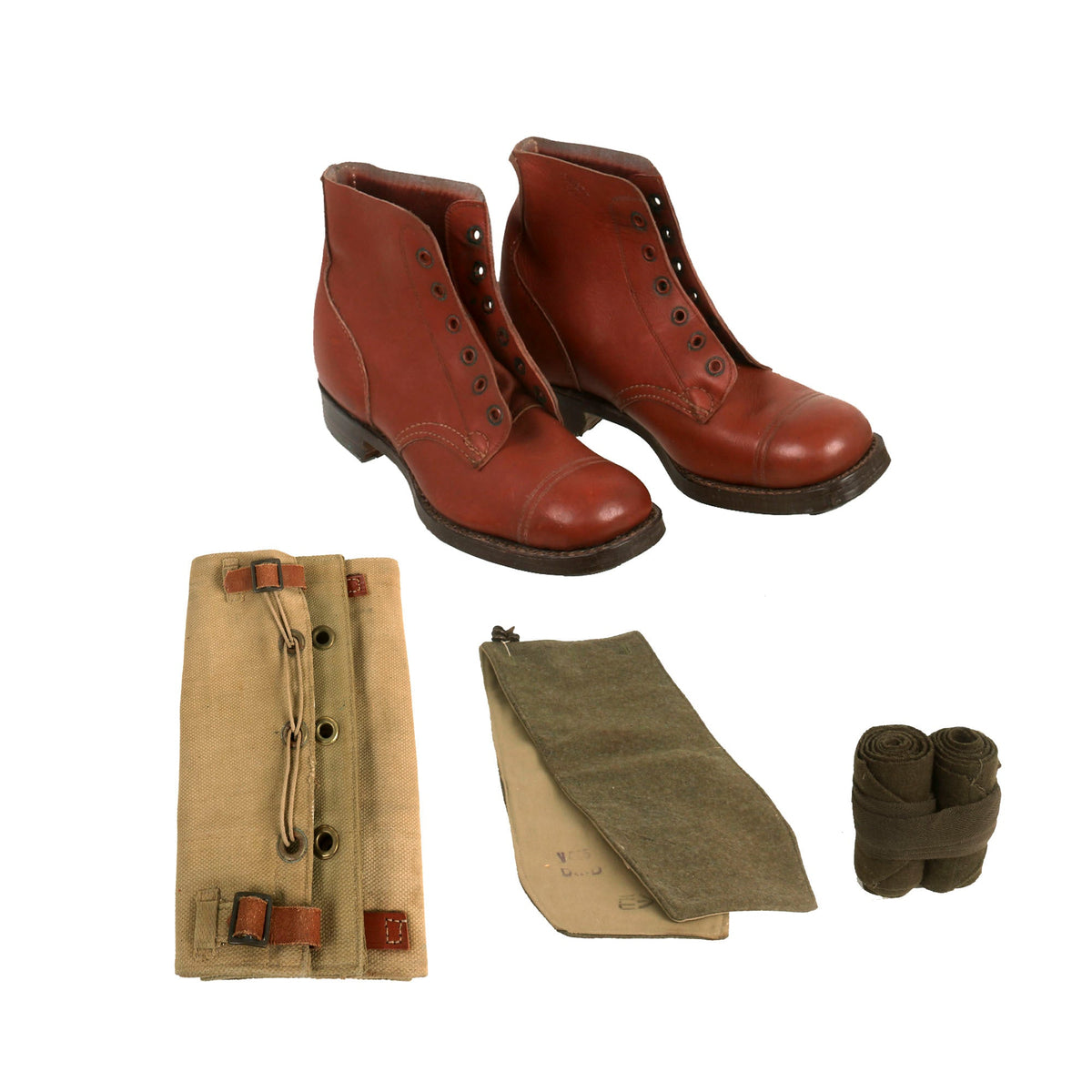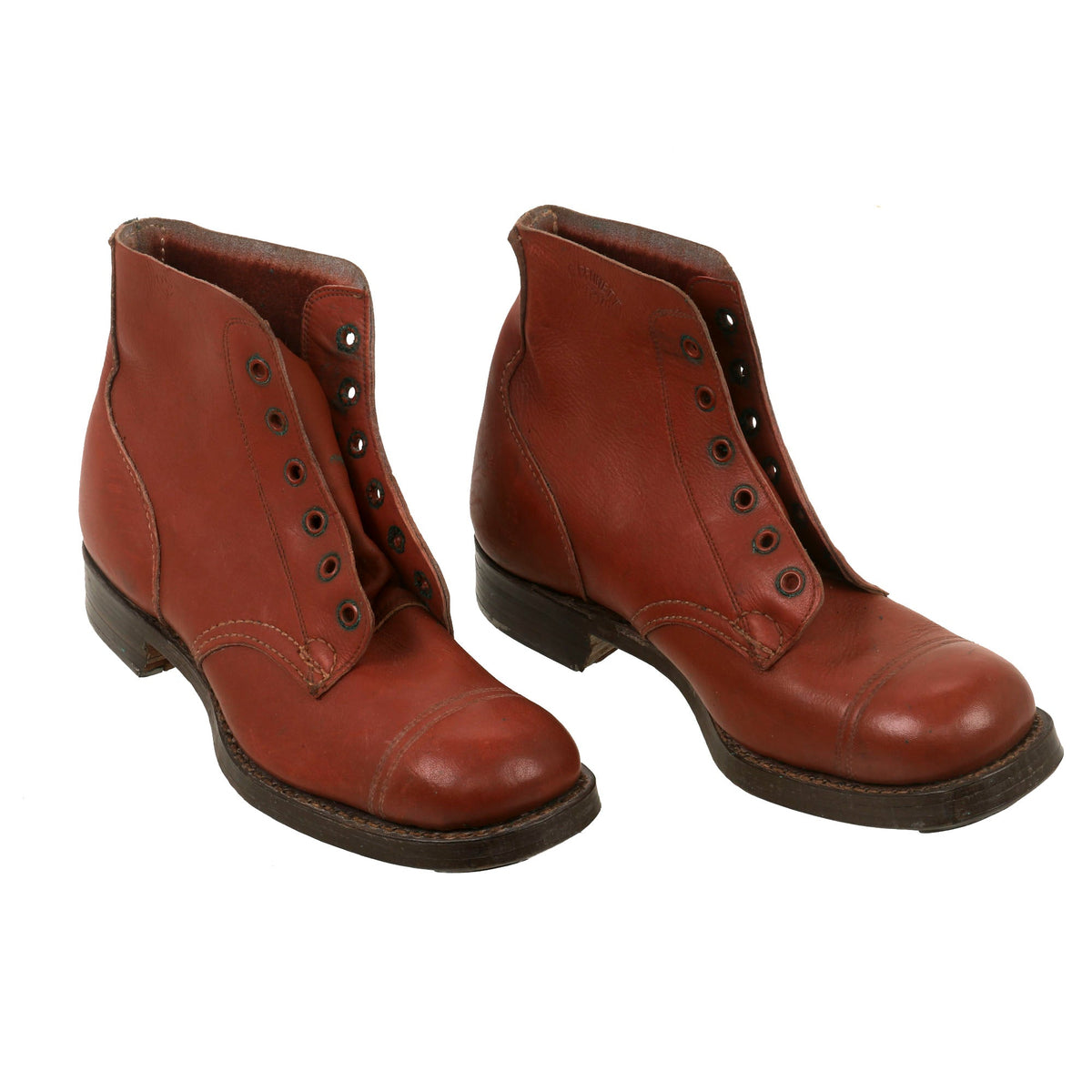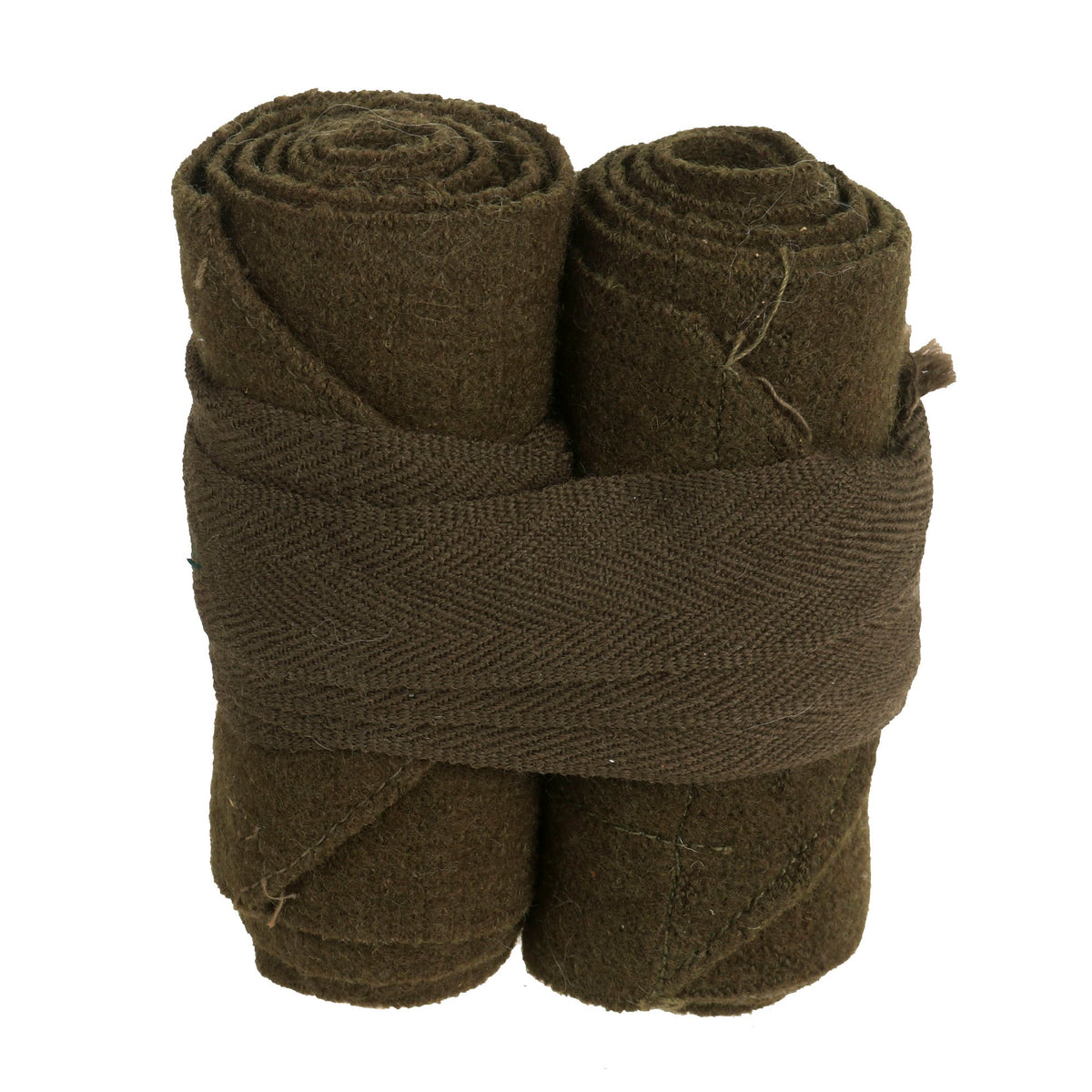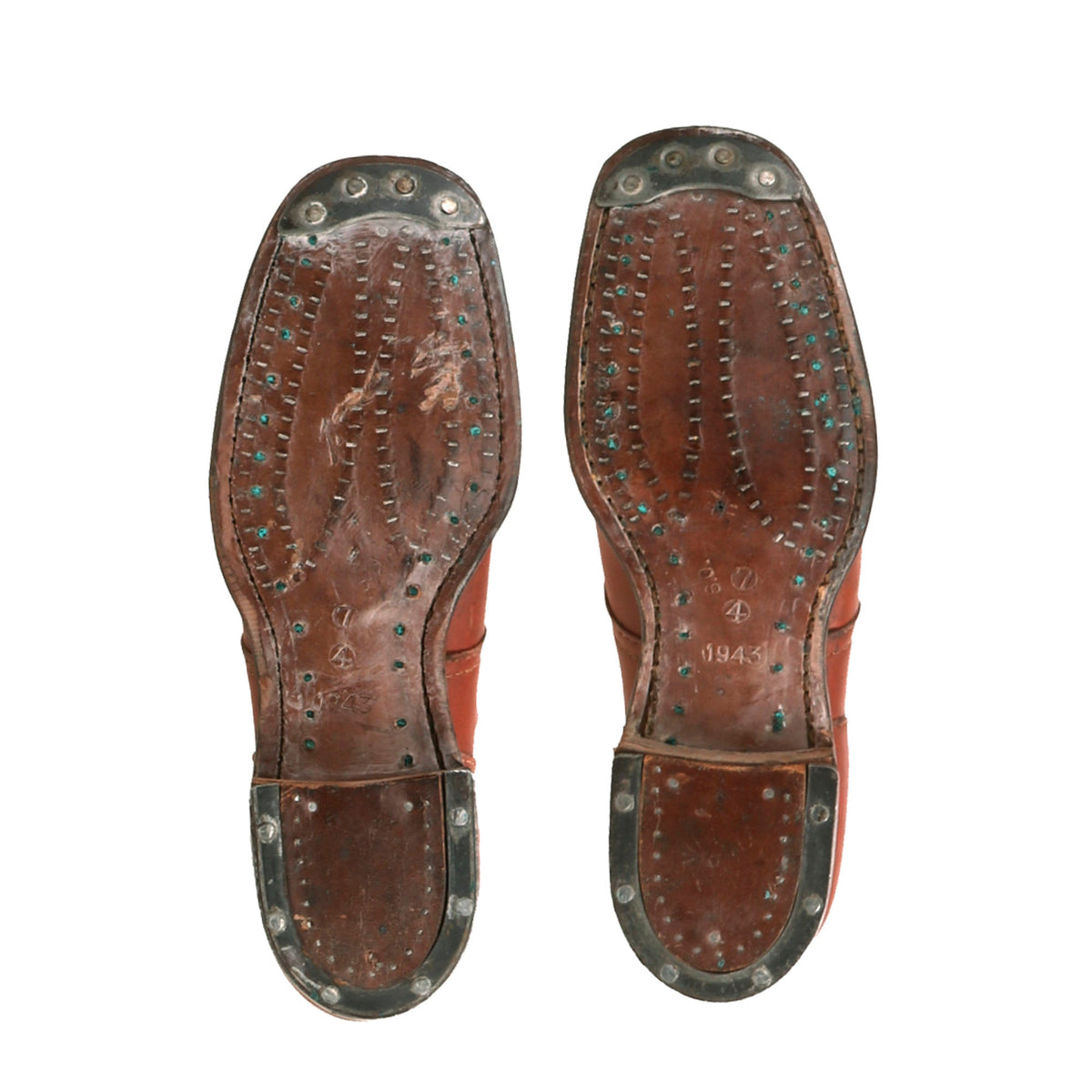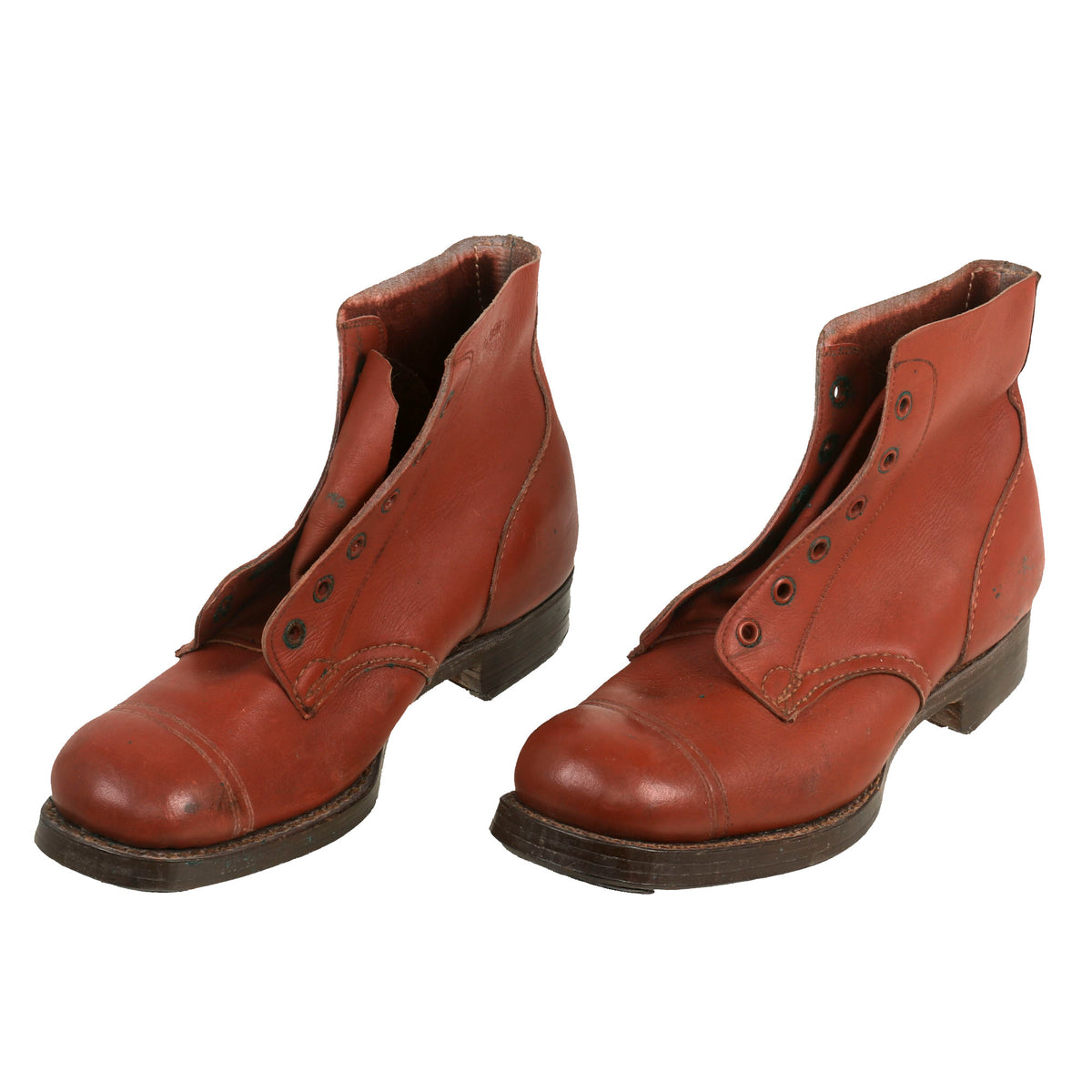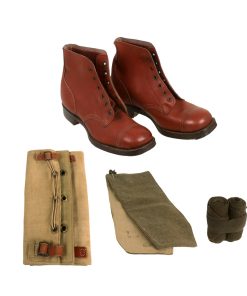Original Australia WWII 1943 Dated Australian Pattern 10085 Boots with Gaiters and Puttees Original Items
$ 195,00 $ 78,00
Original Items: Only One Lot Available. This is an excellent lot of unissued and iconic Australian WWII footwear. The boots are in fantastic serviceable condition overall with excellent leg wraps (puttees) and gaiters. This is a set that would be perfect to complete a uniform display! This pattern of boot came into service with the Australian Army in 1942 making this a very early pair being dated 1943 on the soles. They also have various inspection stamps on the soles, as well as the numbers 7 and 4, which could be sizes. They measure approximately 11 1/2 inches from heel to toe. They were used by the Australians in all the theaters of war in which they served including the Far East and Middle East.
In the First World War, historian Charles Bean described the footwear of the First AIF, simply as being like a “workman’s boot”. Volume 1 of the Official History of World War 1 (Page 63), states that the boots were as pliable as civilian boots and far stouter. It was also said that in France, countless favors were obtained in exchange for Australian boots, such were their popularity amongst English troops. This basic design with only minor modifications (i.e. number of eyelets etc) was in military service prior to 1914 and remained so, up until 1941.
The boot upper merely consisted of two (2) pieces of leather stitched together (a toe section and the main ‘body’ of the boot) with a third piece stitched over the heel – as reinforcing to the back of the boot. There was no toe cap, subsequently the boot had a ‘soft toe’ appearance. All of this, stitched onto a full leather sole may – or may not – have been completed with a metal heel plate. This is clearly illustrated by these two boots produced by different manufacturers. Those made by ‘W.Peatt’ in 1940 have the metal ‘horse shoe’ and nailed sole whilst the other pair; made by ‘J.J. Whyte’ in 1941 have a clean sole, completely devoid of metalwork.
The pattern for Australian military boots was altered after 1941. The main difference being a “toe cap” which was incorporated into the manufacturing process. This resulted in a line of double stitching being evident on the ‘upper toe’ of the boot and it is easy to discern the difference between the two designs. Again, variations between manufacturers could result in some items displaying metal heel or toe plates and others having just a plain, leather sole. Certainly, there are some variations in the colour – from light tan (London Tan) to brown. Some manufacturers altered the design of the heel plate, so that the plate was complete around its perimeter or circumference – and not open at one end, like a ‘horse shoe’. A major variation however was the addition of brass “Jungle Cleats” which were added to improve grip in muddy conditions. A lesson no doubt learnt from experience gained on the Kokoda Track.
While these boots do not have the popular jungle cleats on them, this is still an extremely attractive pair. The boots come with the original leather laces and are in overall unissued condition aside from storage wear.
An excellent grouping ready for further research and display.
Fast Shipping with Professional Packaging
Thanks to our longstanding association with UPS FedEx DHL, and other major international carriers, we are able to provide a range of shipping options. Our warehouse staff is expertly trained and will wrap your products according to our exact and precise specifications. Prior to shipping, your goods will be thoroughly examined and securely secured. We ship to thousands clients each day across multiple countries. This shows how we're dedicated to be the largest retailer on the internet. Warehouses and distribution centres can be located throughout Europe as well as the USA.
Note: Orders with more than one item will be assigned a processing date depending on the item.
Before shipping before shipping, we'll conduct a thorough inspection of the items you have ordered. Today, the majority of orders will be delivered within 48 hours. The delivery time will be between 3-7 days.
Returns
The stock is dynamic and we cannot completely manage it because multiple stakeholders are involved, including our factory and warehouse. So the actual stock may alter at any time. It's possible that you may not receive your order once the order has been made.
Our policy is valid for a period of 30 days. If you don't receive the product within 30 days, we are not able to issue a refund or an exchange.
You can only return an item if it is unused and in the same state as the day you received it. You must have the item in its original packaging.
Related products
Uncategorized
Uncategorized
Angolan Rebel 1970s era 60mm Inert Display Mortar from Angolan Civil War Original Items
Uncategorized
Armored Burgonet Helmet & Polearm from Scottish Castle Leith Hall Circa 1700 Original Items
Uncategorized
Uncategorized
Uncategorized
Uncategorized
Uncategorized
Uncategorized
Uncategorized
Uncategorized
Uncategorized
Armoured Fighting Vehicles of the World: AFVs of World War One (Hardcover Book) New Made Items
Uncategorized
Uncategorized
Band of Brothers ORIGINAL GERMAN WWII Le. F.H. 18 10.5cm ARTILLERY PIECE Original Items
Uncategorized
Australian WWII Owen MK1 Machine Carbine SMG Custom Fabricated Replica with Sling Original Items
